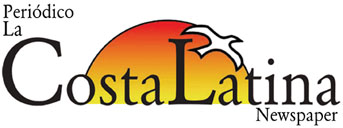Consumo Excesivo de Alcohol: Un Problema Desconocido en Mujeres y Muchachas
El consumo excesivo de bebidas alcóholicas es un problema peligroso que puede llevar a circumstancias trágicas. A menudo no es reconocido como un problema de salud en las mujeres pero casi 14 millones en los Estados Uidos se emborrachan cerca de 3 veces al mes y consumen un promedio de 6 bebidas cada vez, de acuerdo con un reporte de Vital Signs dado a conocer hoy por el Centers of Disease Control and Prevention.
El reporte refleja como el abuso excesivo coloca a las mujeres a un riesgo mayor de muchos problemas de salud tales como cancer del seno, enfermedades transmitidas sexualmente, problemas del corazón y embarazos no intentados. Mujeres embarazadas que beben en exceso exponen a su bebé, que está desarrollándose, a altos niveles de alcohol, lo cual puede causar desórdenes de un espectro alcóholico fatal y un síndrome de muerte infantil súbita.
Además, el reporte encontró que 1 en 8 mujeres y 1 en 6 muchachas de high school reportaron beber excesivamente. Los excesos fueron más comunes en mujeres de 18 a 34 años y estudiantas, blancas e Hispanas y mujeres con ingresos de $75,000 o más. La mitad de todas las estudiantes que beben alcohol reportan hacerlo en exceso.
Consumo excesivo es definido como consumir cuatro o más bebidas de una vez. Beber mucho, incluyendo emborracharse, causa cerca de 23,000 muertes entre mujeres y chicas en los Estados Unidos cada año.
CDC científicos vieron la conducta de beber de aproximadamente 278,000 U.S. mujeres de 18 años y mayores durante los útimos 30 dias por la información colecccionada del 2011 Behavioral Risk Factor Surveillance System, y por aproximadamente 7,500 U.S. estudiantes de high school desde 2011 National Youth Risk Behavior Survey.
El reporte refleja la Guide Community Preventive Services (Community Guide), la cual recomienda politicas efectivas para prevenir consumo excesivo.
"Es alarmante ver que emborracharse es tan común entre mujeres y muchachas, y que la mujeres y muchachas beban tanto como lo hacen," dijo Robert Brewer, M.D.,M.S.P.H., del Programa de Alcohol en CDC. "La buena noticia es que las mismas estrategias cientificamente comprobadas por comunidades y en escenarios clinicos que pueden prevenir beber en exceso en toda la población pueden también dar resultado para prevenir los excesos entre las mujeres y jóvenes."
Para mayor información sobre consumo excesivo, visite CDC Alcohol and Public Healh web site en http://www.cdc.gov/alcohol. Individuos que estén preocupados por el consumo excesivo por si mismos o por otra persona pueden llamar al 1-800-662-HELP para recibir ayuda del National Drug and Alcohol Treatment Referral Routing Service. Para estimados estatales especificos sobre las muertes relacionadas con alcohol y años potenciales de vida perdidos por condición, edad y sexo, visite el Alcohol Related Disease Impact online aplicación en linea en http://apps.nccd.cdc.gov/DACH_ ARDI/Default/Default.asp.
|
Binge Drinking: An Under-recognized Problem Among Women and Girls

Binge drinking is a dangerous behavior that can lead to tragic circumstances. It’s not often recognized as a women’s health problem but nearly 14 million U.S. women binge drink about three times a month, and consume an average of six drinks per binge, according to a Vital Signs report released today from the Centers for Disease Control and Prevention.
The report highlights how binge drinking puts women at increased risk for many health problems such as breast cancer, sexually transmitted diseases, heart disease, and unintended pregnancy. Pregnant women who binge drink expose a developing baby to high levels of alcohol, which can lead to fetal alcohol spectrum disorders and sudden infant death syndrome.
In addition, the report finds that about 1 in 8 women and 1 in 5 high school girls report binge drinking. Binge drinking was most common among women aged 18-34 and high school girls, whites and Hispanics, and women with household incomes of $75,000 or more. Half of all high school girls who drink alcohol report binge drinking.
Binge drinking is defined as consuming four or more drinks on an occasion for women and girls. Drinking too much, including binge drinking, causes about 23,000 deaths among women and girls in the United States each year
CDC scientists looked at the drinking behavior of approximately 278,000 U.S. women aged 18 and older for the past 30 days through data collected from the 2011 Behavioral Risk Factor Surveillance System, and for approximately 7,500 U.S. high school girls from the 2011 National Youth Risk Behavior Survey.
The report highlights the Guide to Community Preventive Services (Community Guide), which recommends effective policies to prevent binge drinking.
“It is alarming to see that binge drinking is so common among women and girls, and that women and girls are drinking so much when they do,” said Robert Brewer, M.D., M.S.P.H., of the Alcohol Program at CDC. “The good news is that the same scientifically proven strategies for communities and clinical settings that we know can prevent binge drinking in the overall population can also work to prevent binge drinking among women and girls.”
For more information about binge drinking, visit CDC’s Alcohol and Public Health web site at http://www.cdc.gov/alcohol. Individuals who are concerned about their own or someone else's binge drinking can call 1-800-662-HELP to receive assistance from the national Drug and Alcohol Treatment Referral Routing Service. For state-specific estimates of alcohol-related deaths and years of potential life lost by condition, age and gender, visit the Alcohol-Related Disease Impact online application at http://apps.nccd.cdc.gov/DACH_ARDI/Default/Default.aspx
|
 Join La Costa Latina
on
Facebook
Join La Costa Latina
on
Facebook

